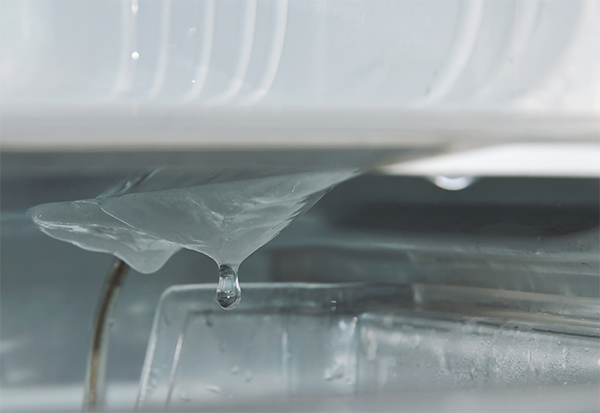How to avoid and repair the main technical failures in household models
Frost-free refrigerators have already been on the market for many years. But they still bring doubts for contractors. Therefore, we’ll be doing a series of three articles about the technical failures that occur in this equipment.
The first will cover household refrigerators and the next will address the problems related to the use of this technology in commercial refrigeration.
To begin, it’s important to know precisely what a frost-free refrigerator is.
The English word frost means ice covering or tiny ice crystals on a cold surface formed from the water vapor in the air, while free implies without any. It’s, therefore, an ice-free device, that is, ice doesn’t form on the walls of the freezer, avoiding the need to periodically defrost it. In short, it’s a refrigerator with an automatic de-icing system.
To enable this deicing, in frost-free household refrigerators there is, attached to the evaporator, a system of electric heating elements which heat the surface of the tubes.
These heating elements are connected to a temperature sensor and triggered by a timer, melting all the ice that forms on the evaporator’s surface. This occurs at regular time intervals which vary depending on the equipment, and can happen once every six or more hours.
In this type of equipment, the evaporator model is different compared to conventional refrigerators, allowing the use of forced ventilation.
Thus, there is an air flow which uniformly moves the cold generated in the evaporator – which in turn prevents condensed liquid from forming on the wall of the freezer and the consequent solidification of the liquid. Thanks to these characteristics, the internal environment of this freezer compartment has a cold, dry and uniform air flow.
The most common problems
Overall, frost-free equipment performs well and is assessed positively by its users.
However, they are subject to the same problems as conventional refrigerators and some others, which are due to their specific characteristics.
A) Water leaks
The most common complaint is water leakage which can occur on the outside of the refrigerator as well as on the inside.
External leaks can be caused by the overflow of the drain pan, where the three most likely causes are:
- The environment is very humid and/or cold and the drain pan is not dry when the second defrost cycle occurs (water evaporates more slowly in colder and humid environments). Thus, the drain pan can’t hold all the water. The solution is to exchange the drain pan for a larger one;
- The drain pan isn’t close enough to the compressor housing, where it remains cold and thus slows water evaporation (it’s the housing’s heat which leads to the evaporation of water that drips into the drain pan). The solution is to move the drain pan closer to the compressor;
- The drain pan is tilted or cracked, causing part or all of the water that it should hold to leak out. The solution is either to correct the position of the drain pan or replace it with a new one.
Another reason for an external leak is the incorrect positioning of the drain, which causes the defrost water not to fall into the pan, but instead drip onto the floor.
Solving this problem is simple: just correctly position the drain.
While leaks inside the refrigerator (in the cabinet) are a result of drain obstruction, which results in water accumulation. It can be blocked by dirt or by being crushed (by being screwed too tightly, for example). The solution is obvious: unclog the drain, or if necessary, replace it.
B) Ice buildup
Another problem that occurs in frost free refrigerators is when the defrost cycles can’t defrost the whole evaporator.
In this case, ice remains, just as in conventional refrigerators. In general, the ice builds up, little by little, on the evaporator fins, eventually blocking them.
Since ice isn’t a good heat conductor, this may lead to the complaint that the refrigerator isn’t cooling well. This happens in very hot and humid environments or when the refrigerator door is opened often.
Especially in these cases where the user complains that “the refrigerator isn’t getting cold”, some technicians are too quick to point to the compressor as the culprit.
However, before reaching this conclusion, it’s necessary to check the components since some of them may be experiencing problems:
- The heating element may be shorted-out, for example;
- The timer isn’t working properly, which causes the defrost to occur at longer intervals than what’s necessary;
- The temperature sensor isn’t working properly;
- The evaporator fan doesn’t turn off or locks-up.
Another electrical component of the equipment may be the cause of the problem. The recommended procedure is to conduct an electrical continuity check on each of them and, if necessary, replace them.




